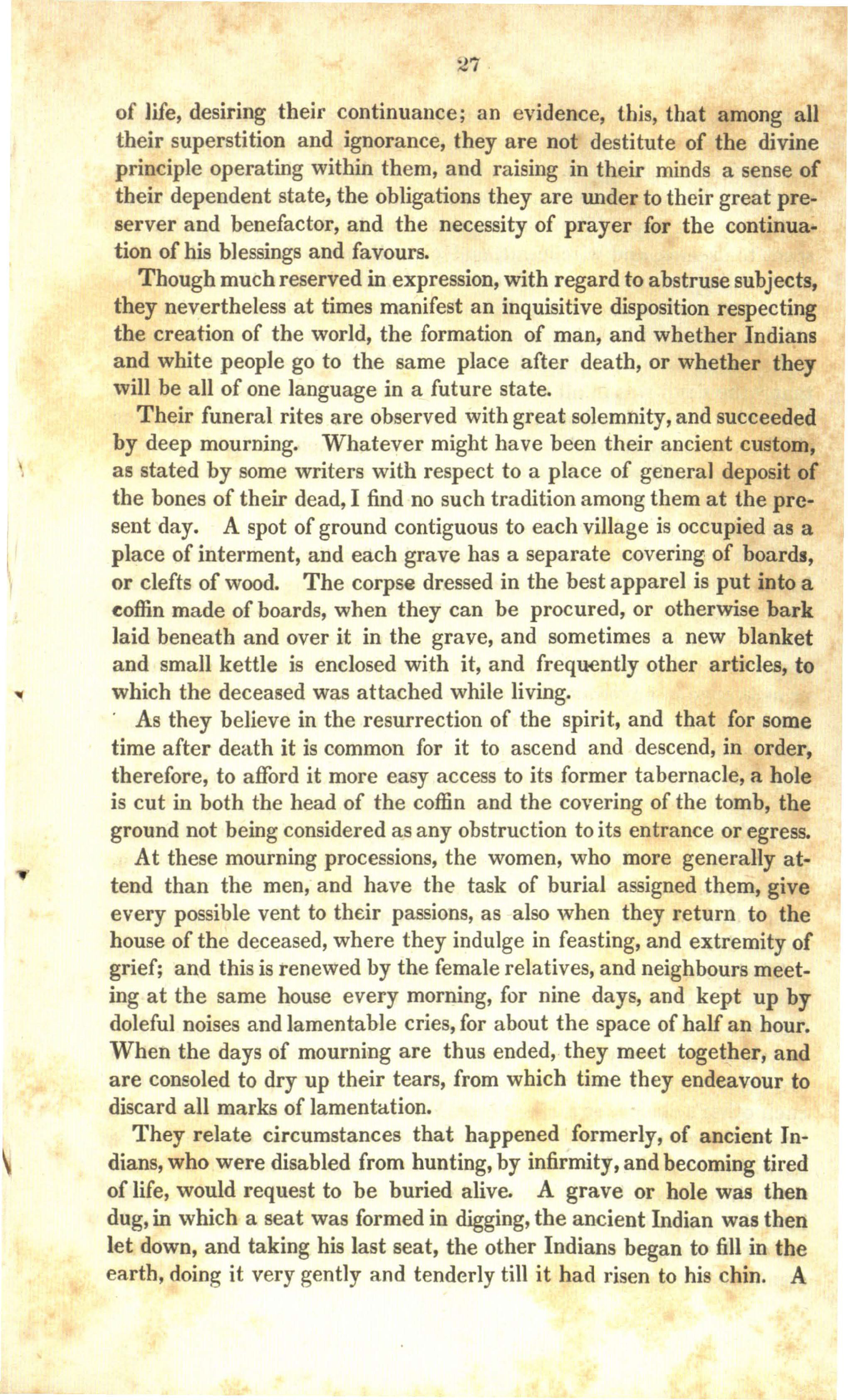of life, desiring their continuance; an
evidence, this, that among all
their superstition and ignorance, they are
not destitute of the divine
principle operating within them, and raising in
their minds a sense of
their dependent state, the obligations they are
under to their great pre-
server and benefactor, and the necessity of
prayer for the continua-
tion of his blessings and favours.
Though much reserved in expression, with regard to abstruse subjects,
they
nevertheless at times manifest an inquisitive disposition respecting
the
creation of the world, the formation of man, and whether Indians
and white
people go to the same place after death, or whether they
will be all of one
language in a future state.
Their funeral rites are observed with great solemnity, and succeeded
by deep
mourning. Whatever might have been their ancient custom,
as stated by some
writers with respect to a place of general deposit of
the bones of their
dead, I find no such tradition among them at the pre-
sent day. A spot of
ground contiguous to each village is occupied as a
place of interment, and
each grave has a separate covering of boards,
or clefts of wood. The corpse
dressed in the best apparel is put into a
coffin made of boards, when they
can be procured, or otherwise bark
laid beneath and over it in the grave,
and sometimes a new blanket
and small kettle is enclosed with it, and
frequently other articles, to
which the deceased was attached while
living.
As they believe in the resurrection of the spirit, and that for some
time
after death it is common for it to ascend and descend, in order,
therefore,
to afford it more easy access to its former tabernacle, a hole
is cut in
both the head of the coffin and the covering of the tomb, the
ground not
being considered as any obstruction to its entrance or egress.
At these mourning processions, the women, who more generally at-
tend than
the men, and have the task of burial assigned them, give
every possible
vent to their passions, as also when they return to the
house of the
deceased, where they indulge in feasting, and extremity of
grief; and this
is renewed by the female relatives, and neighbours meet-
ing at the same
house every morning, for nine days, and kept up by
doleful noises and
lamentable cries, for about the space of half an hour.
When the days of
mourning are thus ended, they meet together, and
are consoled to dry up
their tears, from which time they endeavour to
discard all marks of
lamentation.
They relate circumstances that happened formerly, of ancient In-
dians, who
were disabled from hunting, by infirmity, and becoming tired
of life, would
request to be buried alive. A grave or hole was then
dug, in which a seat
was formed in digging, the ancient Indian was then
let down, and taking his
last seat, the other Indians began to fill in the
earth, doing it very
gently and tenderly till it had risen to his chin. A

